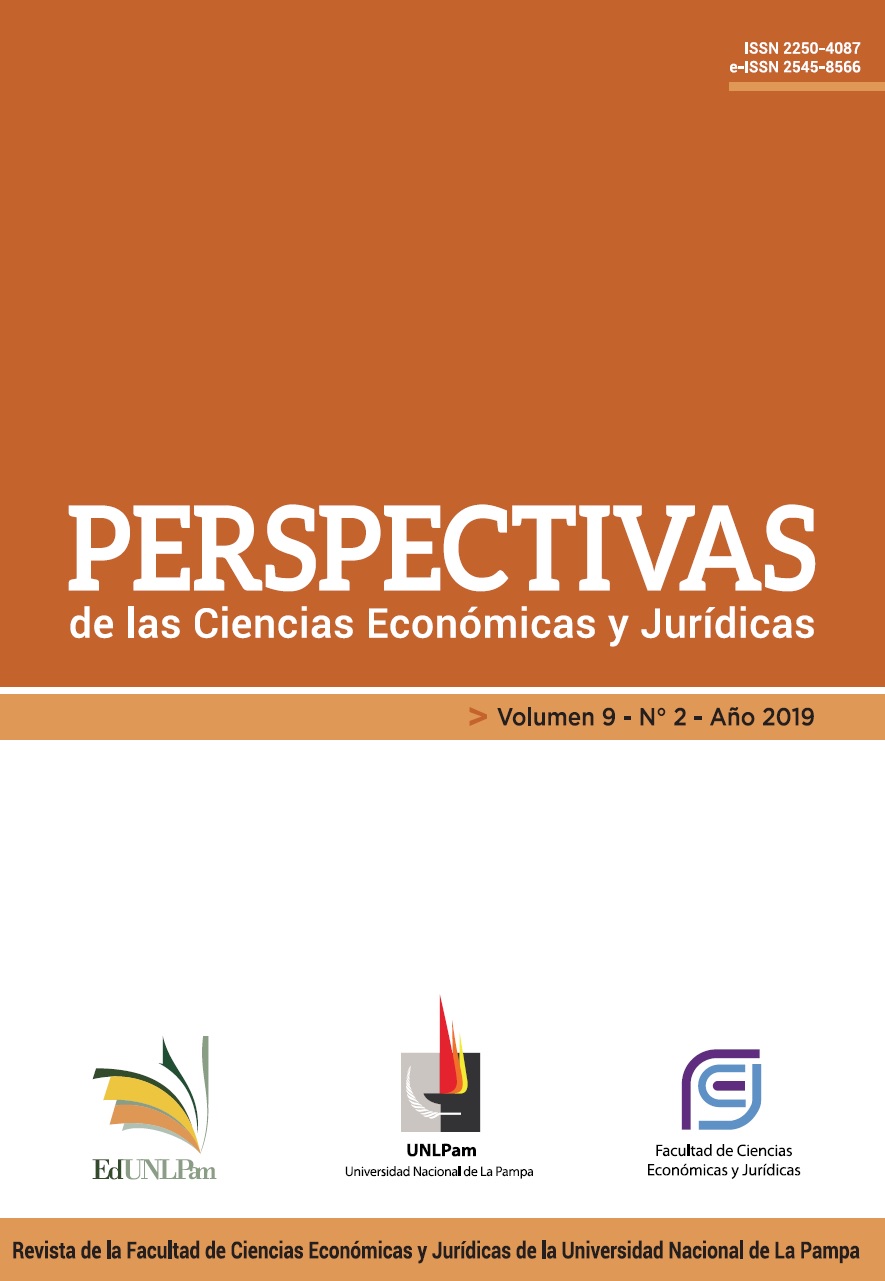MANAGEMENT CONTROL OF GRASS-FED BEEF IN THE SEMIARID PAMPAS
DOI:
https://doi.org/10.19137/perspectivas-2019-v9n2a07Keywords:
grass-fed beef, management control, math model of beef production, managerial indicatorsAbstract
One of the objectives of this work is to propose a quantitative model of management analysis aimed at evaluating the viability of endeavors dedicated to beef production an located in the semi-arid plains. For this purpose, we take into account standards and parameters related to technical, productive, economic and accounting issues. In other words, this proposal is based on the interaction of variables not only taken from the technical aspects emerging from biological cycles, but also considering the price and cost of factors associated to agricultural management. It should be noted that the mathematical model proposed in this work is applicable to a particular productive approach or management cycle related to the production of beef in the semi-arid pampas. That is to say, considering the productive process in its completeness, from the birth of the calf to its grass feed finishing for subsequent commercialization.
In this first stage, the agroecological conditions of the semi-arid pampas and the different types of production that we can find were surveyed and analyzed; the characteristics of the product or value offered and its marketing conditions were also considered. Likewise, a complete cycle system of beef production was identified, together with its technical and productive of efficiency indicators, applicable to the Hilton Quota parameters. Finally, we will consider accounting and economic indicators that could be used to measure and weight prices and related costs.
Based on the information gathered, we conclude that the quantitative model to be developed is applicable to the production of beef commercialized through the Hilton Export Quota. The model will consider the productive potential of each region and from this, the calculation of livestock equivalences and estimated weight gains will be made. Based on this, a breeding plan will be defined, which will be located in the "Caldenal" area and a wintering and finishing plan that will be located in the "Pampa Medanosa" area in the northeast of the province.
To equalize the supply and demand of forage and meet the nutritional needs throughout the year, the amount of hectares needed for both plans will be determined taking into account the potentiality and productive stability of the agroecological regions indicated above. In order to determine the economic results and its accounting measurement, the income, the direct and the indirect costs will be taken into account. Also, for the purpose of computing the opportunity cost of the land, its lease value will be included. To value inventories or stock of animals at the end of the commercial year, we will use the market value, the net realization value or the replacement depending on each particular case. Finally, projected annual profitability indices will be determined based on certain estimates of prices, revenues and costs.
Downloads
References
Bavera, G. (2006) Recopilación para el Curso de Producción Bovina de Carne, FAV UNRC. Extraído de: www.produccionanimal.com.ar/
Caviglia, J., Lorda, H., Lemes, J. (2010) Caracterización de las unidades de producción agropecuarias en la Provincia de La Pampa. Instituto Nacional de Tecnología Agropecuaria. Boletín de Divulgación Técnica No 99.
Duran, R. y Scoponi, L. (2009) El gerenciamiento agropecuario del siglo XXI. Omar Buyatti
Esterlich, H., Castaldo, A. (2014) Receptividad y carga ganadera en distintas micro regiones de la provincia de La Pampa – Argentina y su relación con las precipitaciones. Semiárida. Revista de la Facultad de Agronómica de la UNLPam. 24, 2 7-19
Iglesias, D., Lorda, H., Torrado Porto, R., Fernandez, M. (2017) Boletín Económico – Redes de Economía Agropecuaria La Pampa – San Luis. INTA.
Jack, L. (2009) Benchmarking in Food and Farming. Creating Sustainable Change. Gower Publishing Company.
Pordomingo, A., Grigioni, G., Carduza, F., Volpi Lagreca, G. (2012) Effect of feeding treatement during the backgrounding phase of beef production from pature on animal performance, carcass and meat quality. Meat Science 90, 939-946
Pordomingo, E. (2018) Decisiones agropecuarias: estrategia y gerenciamiento. Colección Libros Académicos de Interés Regional. EdUNLPam
Schor, A., Cossu, M., Picallo, A., Martinez Ferrer, J., Gregara Naon, J., & Colombatto, D. (2008) Nutritional and eating quality of Argentinean beef: A review. Elsevier Meat Science 79: 408-422
Torres, Carlos (2013) Normas contables para la actividad agropecuaria. Omar D. Buyatti
Viglizzo, E., Roberto Z., Brockington, N. (1991) Agroecosystems’ performance in the semi-arid pampas of Argentina and their interactions with the environment. Agricultural Ecosystems and Environment 36, 23-36
Downloads
Additional Files
Published
Issue
Section
License
Aquellos autores/as que tengan publicaciones con esta revista, aceptan los términos siguientes:- Los autores/as conservarán sus derechos de autor y garantizarán a la revista el derecho de primera publicación de su obra, el cuál estará simultáneamente sujeto a la Licencia de reconocimiento de Creative Commons que permite a terceros compartir la obra siempre que se indique su autor y su primera publicación esta revista.
- Los autores/as podrán adoptar otros acuerdos de licencia no exclusiva de distribución de la versión de la obra publicada (p. ej.: depositarla en un archivo telemático institucional o publicarla en un volumen monográfico) siempre que se indique la publicación inicial en esta revista.
- Se permite y recomienda a los autores/as difundir su obra a través de Internet (p. ej.: en archivos telemáticos institucionales o en su página web) antes y durante el proceso de envío, lo cual puede producir intercambios interesantes y aumentar las citas de la obra publicada. (Véase El efecto del acceso abierto).











.png)



5.jpg)












